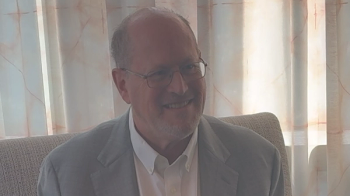
SBRT for Prostate Cancer May Result in More Complications
Patients treated with a newer, faster, and less expensive type of radiotherapy also have higher rates of urinary complications, according to a new study.
Patients treated with a newer, faster, and less expensive type of radiotherapy also have higher rates of urinary complications, according to a new study
The newer therapy approach, called stereotactic body radiation therapy (SBRT), is already beginning to replace the older standard approach, intensity-modulated radiation therapy (IMRT). However, the new study by James B. Yu, MD, of the Yale School of Medicine and Yale Cancer Center, and colleagues at the Cancer Outcomes, Public Policy, and Effectiveness Research (COPPER) Center at Yale Cancer Center shows that SBRT is associated with increased toxicity that offsets the savings of using this newer form of radiotherapy.
While previous reports analyzed outcomes at large national cancer centers, the current study assessed the use and costs of the two approaches in real-world community oncology clinical practices.
“The most important result is that the number of claims indicative of urethral and urinary complications was higher for SBRT compared to standard IMRT, but that despite this increase in complications, the cost of SBRT was still less than that of IMRT,” said Yu.
“We were surprised to see the robustness of the signal and the fact that our measurement of genitourinary complications was significant at each time point measured. This may indicate that SBRT as practiced nationwide has more complications than IMRT as practiced nationwide,” he continued.
The average per-patient cost of SBRT was $13,645 compared with $21,023 for IMRT.
Six months following treatment, 15.6% of patients treated with SBRT had a genitourinary toxicity compared with 12.6% of those treated with IMRT (odds ratio [OR] = 1.29; P = .009).
At 24 months after treatment initiation, patients treated with SBRT had increased side effects, including urethritis, urinary incontinence, and obstruction. Of patients treated with SBRT, 43.9% had a genitourinary toxicity compared with 36.3% of those treated with IMRT (OR = 1.38; P = .001). The incidence of a fistula is a concern with SBRT, but the current study found no significant differences in the incidence using either technique.
Even with increased side effects, cost of care (including follow-up and treatment of side effects) was still lower with SBRT.
The authors compared outcomes among a national sample of 4,005 patients receiving either SBRT (n = 1,335) or IMRT (n = 2,670) as part of their prostate cancer treatment between 2008 and 2011. All participating patients were Medicare patients who were age 66 or older. The retrospective study used the Chronic Condition Data Warehouse research database of Medicare claims.
Still, the authors indicate it is possible that SBRT is still preferable to IMRT for both patients and insurers, as SBRT is more convenient and of shorter treatment duration, is less expensive overall compared with IMRT, and may be more effective in terms of cure rates. SBRT is completed in as few as five visits, and each session delivers a higher intensity of radiotherapy compared with that used in IMRT. In contrast, IMRT takes 7 to 9 weeks for completion and uses less radiotherapy per session.
Based on these results, the authors recommend a prospective trial to assess the benefits and harms of each type of radiotherapy, as well as the costs. Anthony V. D’Amico, MD, PhD, chief of genitourinary radiation oncology at Brigham and Women’s Hospital in Boston, stated in an
The multi-institutional Radiation Hypofractionation Via Extended Versus Accelerated Therapy (HEAT) trial compares standard fractionated radiation and SBRT and enrolls patients in a relatively hypofractionated-dose treatment arm.
“It is important to recognize that [the current study] generated a testable hypothesis and not proof of causation because these results are non-randomized and there are several patient and treatment factors that could have influenced the results,” noted D’Amico in the editorial.
In an email correspondence, Dr. Yu told Cancer Network that he believes IMRT remains the standard of care at the present time. “My recommendation is that SBRT should ideally be either performed by high-volume institutions that enroll patients in prospective data registries or in a randomized trial. That said, our study shows it is very reasonable for patients to decide to undergo SBRT given its convenience and lower cost, if they are not bothered by the potential for greater urinary side effects. For example, if a patient has excellent urinary function, and they and their physicians believe they have a low risk for side effects, and the idea of up to 45 daily treatments of IMRT is prohibitive, SBRT is a very reasonable option, as is brachytherapy.”
Newsletter
Stay up to date on recent advances in the multidisciplinary approach to cancer.



















































































